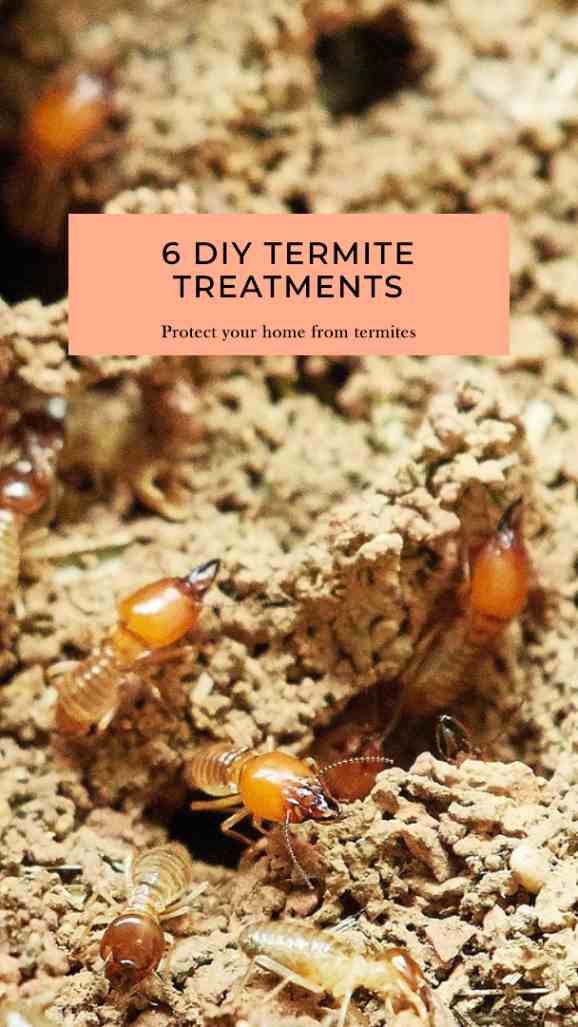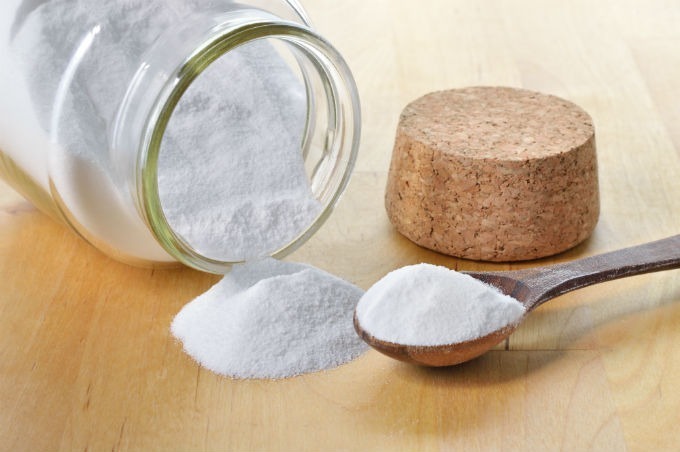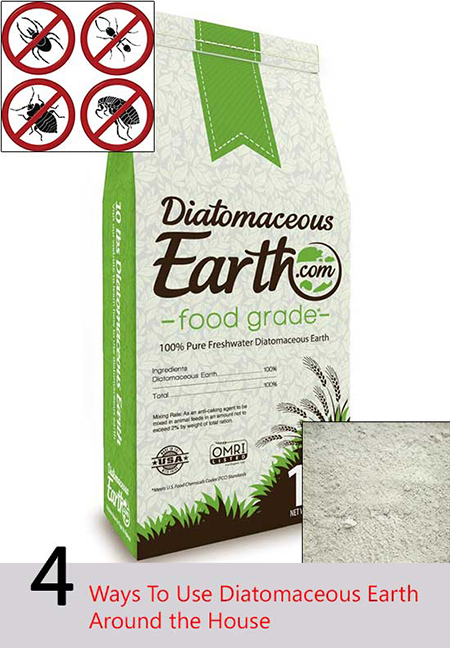6 DIY Termite Treatments

Make sure to like Living Green and Frugally on Facebook, Shop at Amazon to help support my site and explore our PINTEREST BOARDS for innovative ways you can become self-sufficient.
Termites are silent destroyers that can wreak havoc on your home, causing thousands of dollars in damage before you even notice their presence. These wood-eating insects burrow deep into the structure of your house, weakening foundations, walls, and floors, and potentially compromising the safety of your living space.
Protecting your home from termites is essential to avoid costly repairs and maintain the integrity of your property. By taking proactive measures, including DIY treatments, you can safeguard your home and prevent termites from establishing a destructive foothold.
Termites are among the most destructive pests homeowners can encounter. They can silently invade your home, causing extensive damage to wooden structures before you even notice their presence.
While professional pest control is often recommended for severe infestations, there are several do-it-yourself (DIY) treatments you can try to protect your home from these wood-destroying insects. Below are six effective DIY termite treatments.
View this post on Instagram
1. Cardboard Traps
What You Need: Cardboard, water
Cardboard traps are a simple yet effective method to detect and reduce termite populations. Termites are attracted to the cellulose in cardboard, making it an ideal bait.
Instructions:
- Step 1: Wet several pieces of cardboard to make them more appealing to termites.
- Step 2: Stack the pieces together and place them near areas where you suspect termite activity, such as near wood piles, in basements, or close to the foundation.
- Step 3: Check the traps every few days. If termites are present, you’ll see them feeding on the cardboard.
- Step 4: Once you notice termite activity, carefully remove the cardboard and burn it to kill the termites. Repeat as necessary.
2. Beneficial Nematodes
What You Need: Beneficial nematodes (available at garden centers or online)
Beneficial nematodes are microscopic worms that are natural predators of termites. They seek out and infect termites, releasing bacteria that kills them.
Instructions:
- Step 1: Purchase beneficial nematodes and follow the instructions on the package for preparation.
- Step 2: Apply the nematodes to the soil around the perimeter of your home, focusing on areas where you suspect termite activity.
- Step 3: Repeat the application every few weeks to ensure the nematodes continue to control the termite population.
3. Diatomaceous Earth (DE)
What You Need: Diatomaceous earth (food-grade)
Diatomaceous earth is a fine, powdery substance made from fossilized algae. It’s safe for humans and pets but deadly to termites and other insects. When termites come into contact with DE, it damages their exoskeletons, causing them to dehydrate and die.
Instructions:
- Step 1: Sprinkle a thin layer of diatomaceous earth around the foundation of your home, paying particular attention to cracks and crevices where termites might enter.
- Step 2: Apply DE directly to infested wood areas as well.
- Step 3: Reapply after rain or heavy winds to maintain its effectiveness.
4. Orange Oil
What You Need: Orange oil (d-limonene)
Orange oil is a natural extract derived from orange peels. It contains d-limonene, which is toxic to termites. When applied to infested areas, orange oil can kill termites on contact and prevent future infestations.
Instructions:
- Step 1: Purchase orange oil and a spray bottle.
- Step 2: Locate termite galleries (tunnels) or areas of infestation by tapping on wood and listening for hollow sounds.
- Step 3: Inject or spray the orange oil directly into the galleries and any other infested areas.
- Step 4: Repeat the application every few days until you no longer see signs of termite activity.

5. Borax (Borate) Treatment
What You Need: Borax powder (sodium borate), water, spray bottle
Borax is a natural mineral that can be used to treat and prevent termite infestations. When termites consume borax-treated wood, it disrupts their digestive systems, eventually killing them.
Instructions:
- Step 1: Mix a solution of borax powder and water (1:1 ratio) in a spray bottle.
- Step 2: Spray the solution onto wooden surfaces where termites are active or where you want to prevent an infestation.
- Step 3: Allow the wood to absorb the solution and reapply as needed, especially after rain.
6. Sunlight Exposure
What You Need: A sunny day, termite-infested furniture or wood
Termites thrive in dark, moist environments. Exposing them to direct sunlight can be an effective way to kill them, as they are highly sensitive to heat and dry conditions.
Instructions:
- Step 1: Identify infested furniture or wood items.
- Step 2: On a hot, sunny day, move the infested items outside to a spot with direct sunlight.
- Step 3: Leave the items in the sun for at least 2-3 days, rotating them to ensure all sides are exposed.
- Step 4: After sun exposure, inspect the items for signs of termite activity and consider applying another treatment, like borax or orange oil, for added protection.
Conclusion
While these DIY treatments can help control and reduce termite populations, they may not completely eliminate an established infestation. If you suspect a significant termite problem, it’s always a good idea to consult a professional pest control service. However, these methods can be a valuable part of your home maintenance routine, helping you prevent termites from gaining a foothold in the first place.
